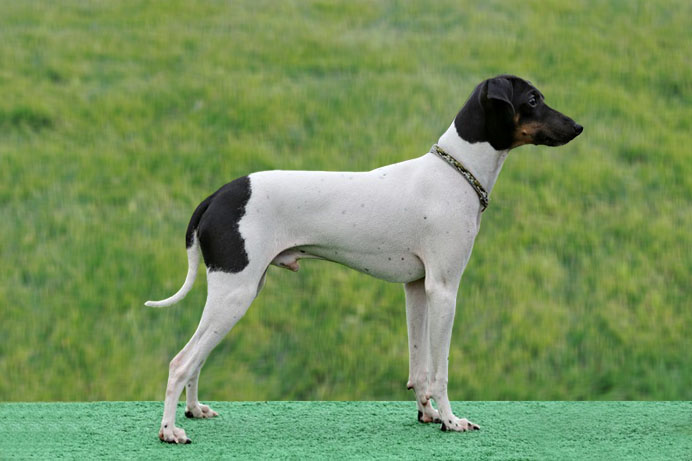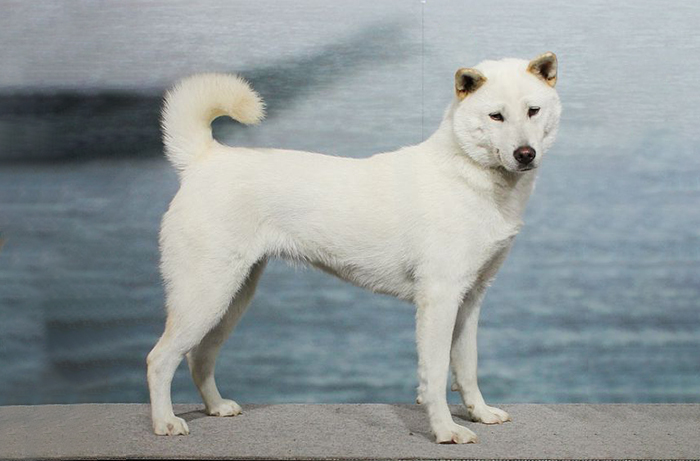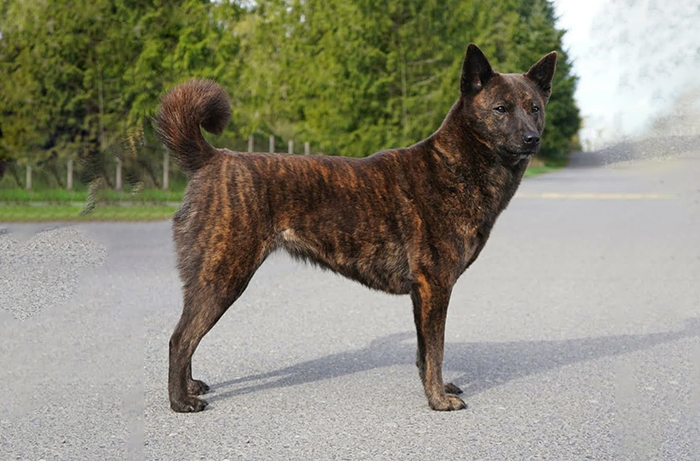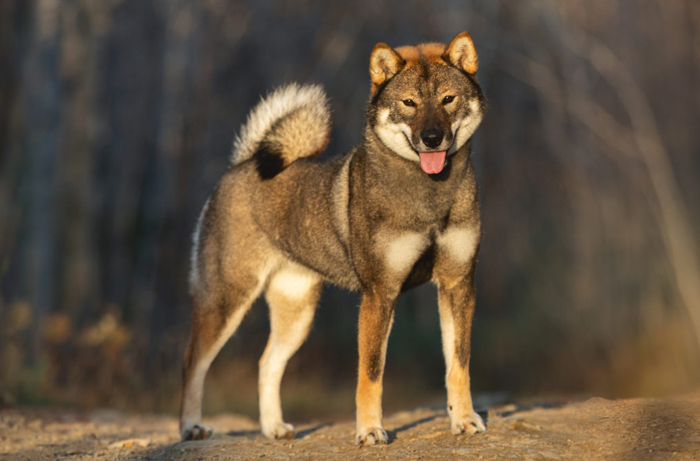Menu
ALASKAN MALAMUTE
highly intelligent, independent and willfulJust fill out your Name and the Email.
The message has already been written.
Note: We will send you a confirmation email right after you submit it. If you haven’t seen the confirmation email within 5 minutes even in spam. That means your typed email address has a typo. Please re-confirm your email and re-send it to us. Thank you!
Some FAQs about Alaskan Malamute
They are good family pets for people who love huge and powerful breeds. They are different from huskies but can coexist with them. If you are an outdoor person who also loves winter sports, an Alaskan malamute will make a perfect companion. They are friendly and extremely devoted.
Generally a quiet breed, Malamutes rarely bark. They do hold conversations with you, vocally expressing themselves with “woo woo” sounds or loud, extensive howls.
Malamutes are highly intelligent but also independent and willful, often to the point of stubbornness.
“The Siberian Husky was bred to pull light loads over long distances,” says Demmin. “The Alaskan Malamute was bred to pull heavy loads over short distances. I like to compare the Siberian to a marathon runner – light and nimble. The Malamute is the weightlifter – big and strong.”
The Alaskan Malamute is a wolf dog breed. These arctic sled dogs descended from wolves and still resemble them very closely, both physically and mentally. Of course, they have also been domesticated over the years and are gaining popularity as a companion dog.
Still the perfect Eskimo dog, this dog breed continues to protect people living in Alaska from wild animals. While they have a strong-willed and aggressive demeanor when protecting their families against animals, they are often excessively friendly when encountering humans.
The Alaskan Malamute is an affectionate and loyal dog who looks serious but is in fact playful. They are good family pets for people who love huge and powerful breeds. They are different from huskies but can coexist with them.
Malamutes are patient with children and love the attention they get from them, but fast-growing, energetic Alaskan Malamute puppies can easily overpower a young child under age five. In their exuberance, they can knock a child over.
The Alaskan Malamute, which has an average lifespan of 10 to 12 years, occasionally suffers from gastric torsion, seizures, hemeralopia, and polyneuropathy.
How to buy Alaskan Malamute in Japan?
STEP 1: Contact Us via:
To get the fastest response, we recommend you message us via Whatsapp.
STEP 2: Tell us you want a Alaskan Malamute and we are happy to hear more about other details like: gender, coat color, your expense, and your special request if you have one.
To save time, let fill out the form below with something like: Hello! or I need a dog. and that is enough to start our good cooperation.
*Please Note: It is difficult to know which breeder is trustworthy when you are in another country. But fortunately there are reputable associations that can guarantee the quality of breeders who are members of their association. These can be mentioned as Japan Kennel Club – JKC, The Kennel Club of Japan – KC or Nihonken Hozonkai – 日保 and many other associations (JABC, JCC, ICC, CPRO, JCU, KCP, ACC, CCJ, KCC, NMSA, WCA, JMSA, ZCC). Dogs and Cats sold by breeders belonging to these associations are always accompanied by a pedigree certificate.
JP-Pets will act on your behalf, carry out the necessary export procedures quickly, accurately and professionally to ensure that the dog can be delivered to your hands. About exporting methods, you can see more here: Exporting Methods.
Talk to us and get a free consultation from our experts.
ALASKAN MALAMUTE
Alaskan Malamute
The wolf-like Alaskan Malamute is named after the Native American Mahlemut people, who bred these dogs to pull heavy loads and travel great distances across the snow when sleds were the only mode of transport. Today, it is still used to haul freight in remote North American locations, and successfully takes part in sled-racing competitions. Also used on polar expeditions, this breed has staggering amounts of stamina, strength, and tenacity combined with highly tuned senses of direction and smell. For all its toughness, the Alaskan Malamute is a friendly dog, at least towards people, which means that it cannot be relied on as a guard dog. It likes children but is too big and boisterous to be left alone with a small child. The Alaskan Malamute, especially the male, tends to be intolerant of strange dogs, and without thorough socializing can quickly become aggressive. The breed also has a strong chasing instinct and can disappear far and fast in pursuit of small animals that it sees as prey. Owners should be cautious about where and when to exercise this dog off the lead. A quick learner, the Alaskan Malamute has a strong will, so needs firm handling and training in good habits right from the start. The Alaskan Malamute settles well into domestic life as long as it has at least two hours of exercise each day and a garden to roam in. A bored dog, with energy to spare, can be destructive if left at home without supervision. Although its thick coat sheds in spring, there is a risk of overheating if the dog is over-exercised in hot weather, so it needs access to shade. The hardy Alaskan Malamute is happy to sleep outdoors, provided it has a companion.
The Breed History
The Malamute is one of the ancient Arctic Sled Dogs, and they are the Native sled dog of Alaska. Their name derives from the Innuit tribe/village (Mahlemuts) that kept them. The Samoyed and Siberian Husky of Russia are cousin breeds. First registration in AKC occurred in 1935. Within the breed are two types based on size and color. M’Loot are larger than the Kotzebue strain, and the Kotzebue consist of dogs with only wolf-gray coat color.
Breeding for Function
Hauling heavy sleds was their primary function. They are still popular as sled racing dogs, and as companion animals. Their forte is in pulling weight, not in their speed, but due to their stamina, they excel at long distance racing.
Physical Characteristics
Height at Withers: female 23” (58.5 cm), male 25” (63.5 cm).
Weight: females 75 lb (34 kg), males 85 lb (38.5 kg).
Coat: They blow their coats twice annually but are relatively low shedding during the rest of the year. They have low bathing and grooming needs since they tend to groom like a cat. They have a very dense double coat with a short (1-2” or 2.5-5 cm) dense wooly soft undercoat and very dense stand out coarse guard hairs in the outer coat that are straight. There are distinct face markings including a face of white or white with a bar or mask. Blue eyes disqualify except in red color dogs, where they are pigmented brown; the palpebral margins, lip margins and nose are black. Coats are commonly gray in different shades, black, red, and sable. All of these have points and markings in a prescribed pattern of a different color. The only solid dog allowed is a white one. Usually most of the underside and the lower limbs of the dog are white.
Longevity: 12 years.
Points of Conformation: The dog is compact, very muscular, with high alert head carriage and possesses a deep thorax (1/2 the height of the dog) with well-sprung ribs. Head is broad, small triangular ears are held erect or pricked up when alert and they are set well back on the skull. Sometimes while running the ears are seen folded back and down. Medium-sized eyes are almond shaped, and dark brown in color. The muzzle gradually tapers. Their tail is set high, thickly covered in hair and sits a plume over the topline. Limbs are heavily boned and well muscled, and not bowed. Gait is true and tireless, with long powerful stride and excellent agility. Neck is short, muscular, and has a moderate arch. Topline is straight but slopes down towards the rear of the dog. The feet are large and possess large thick pads, with plenty of hair between the toes. Toes are well arched, and compact. Dewclaws on the rear are removed.
Recognized Behavior Issues and Traits
Terms used to describe this Breed include: active, friendly, and good with children. Also they are loyal, but may fight with other dogs unless socialized, may be strong on the leash, and early obedience training is important since these dogs can be a bit stubborn and are easily bored. They need a lot of exercise and mental stimulation. They will enjoy gentle children, though early socialization to children is recommended. Other traits include needing lots of human contact, and not considered a good watchdog. They may dig so it is advised to bury fence below grade and make it high (6’) and sturdy. They have low barking tendency but are very vocal with talking noises and may howl. Tolerate heat OK if given shade and cool water.
Looking for more of other Dog breed information
JAPANESE TERRIER independent, active, crisp, and lively I <3 Japanese Terrier! The quick message here! Just …
HOKKAIDO DOG skilled hunter, devoted companion and trustworthy watchdog I <3 Hokkaido Dog! The quick messag …
SHIKOKU INU intelligent, loyal and alert I <3 Shikoku Inu! The quick message here! Just fill out your Name …
…
BERNESE MOUNTAIN DOG sweet, calm and easygoing I <3 Bernese Mountain Dog! The quick message here! Just fill …
<a class="" …






